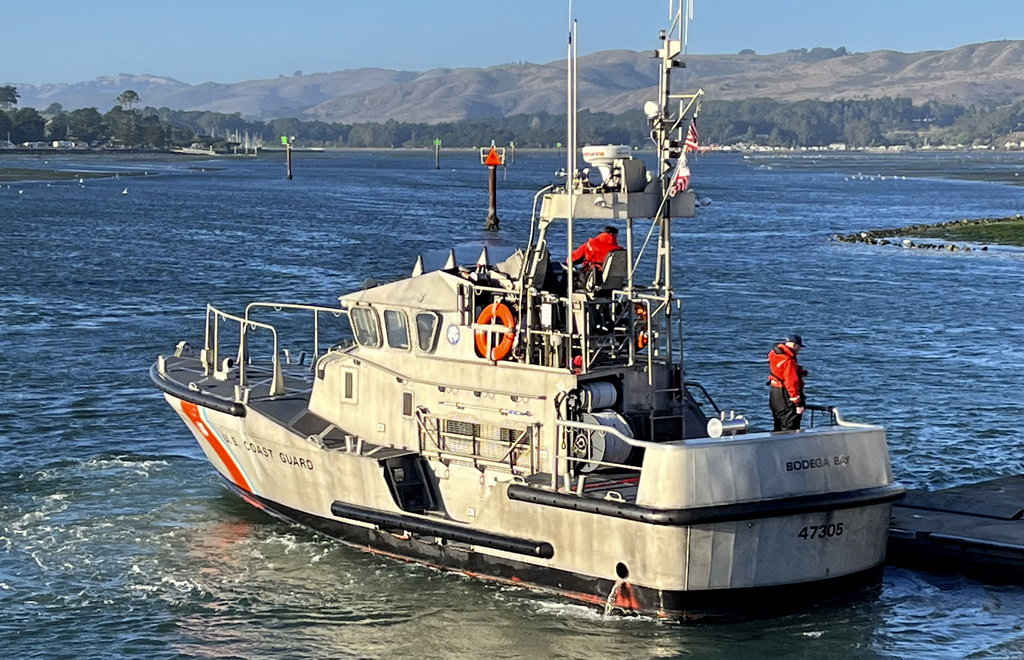
Bodega Bay is a special place on opening day of recreational crab season, home to an abundance of one of the most sweet, tender and tastiest meats in the sea.
Its waters also hold great peril. On Saturday night, one person died, one was rescued and four others went missing after their boat capsized; on Monday, another vessel capsized, leaving one more person dead and another missing.
“You can get into a lot of trouble really easily and really quickly,” said Paul Kanive of the California White Shark Project, who routinely navigates the waters of Bodega Bay, on Sonoma’s rugged coast, while conducting research. “It’s a dynamic area of nautical challenges.
“It doesn’t take much for things to go wrong. And then there’s no going back.”
On Saturday, members of the Phommathep family and a friend drove to the coast from their home in the small community of Corning, north of Sacramento. A cell phone ping from their 21-foot Bayliner suggests that the boat was last in the waters near Carmet Beach.
A 17-year-old boy was found dead after the incident; according to a GoFundMe campaign, he was Johnny Phommathep Jr, an offensive and defensive lineman for his high school’s football team. His father, John Phommathep Sr., a military veteran and volunteer firefighter, was among the missing, according to the fundraising post.
On Monday morning, one boater died and another was missing after their Boston Whaler capsized on the southern part of South Salmon Creek Beach, off Bodega Head. The men were not residents of Sonoma County; their names have not been released.
Commercial fishing of Dungeness crab, a staple of holiday celebrations for many West Coast families, has been delayed for the sixth year in a row. To protect endangered humpback whales from getting entangled in vertical fishing lines, crabs won’t be widely available before early December and possibly not until next year.
But recreational crab season opened on Saturday.
Bodega Bay, a weathered fishing hamlet about 70 miles north of San Francisco and 20 miles west of Santa Rosa, is popular with many Central Californians. It sits off Route 1 on the Sonoma coast, past oak-covered hills and sheep ranches.
No one knows exactly what caused the two boats to capsize. Mechanical problems may have been at fault. But the challenging conditions of Bodega Bay demand respect from even the most veteran mariners.
Shallow rocks are hidden in its cerulean waters, beneath ocher sandstone cliffs.
“There are rocky outcrops that need a wide berth. You can’t always tell how deep it is, or where to navigate around,” said Kanive.
Afternoon winds grow fierce, howling in from the northwest. That’s caused by cool air from the Pacific Ocean rushing inland to replace the warm air rising from the heated land during the day. On Saturday, wind speeds averaged 10 to 15 miles per hour, increasing to 17 to 28 miles per hour by Monday, with wind gusts reaching 40 miles per hour. Waves ranged from 10 to 12 feet, according to National Oceanic and Atmospheric Administration data.
Experienced fishermen know the safer spots, said Kanive. In rough seas, “there’s a lot of places where you shouldn’t be.”
Crabbing is often best when the season opens, because more of the creatures are readily reachable, said Kanive. “People want to go early because they think they’re going to miss out if they wait a week or two.”
But in the beginning of the season, “fishermen are not necessarily well versed in weather conditions and the bad things that can happen,” said commercial crabber Richard Ogg, who sorrowfully watched first responders rush out to sea on Saturday from his home in Bodega Bay.
“They don’t realize how quickly things change,” he said.
In huge waves and steep swells, recreational boats may be rolled and tossed like a toy. “Their boats are not capable of weathering these these wind conditions and swells, said Ogg. “They get moved around all over the place. In those conditions, it gets much more difficult to maneuver the boat.”
Water temperatures in the area Monday morning ranged from the lower to mid-50s, reported the National Weather Service. That’s cold enough to cause water shock and hypothermia, making drowning much more likely.
Out-of-town visitors, excited to be the first in the water, may not notice growing signs of danger.
Locals called it “Sacramento Syndrome,” said Ogg. In bad weather, “we wouldn’t go out. But people who had driven all that way, they wanted to get in the water.”
When recreational crabbing season opens, people have made plans, sometimes months in advance, said Kanive. “They already have a boat set up. They’re committed to go. So the weather — the wind, the swell, the tides — is not prioritized. That’s how tragic events, like these, happen.”
Sometimes recreational crab boats are overloaded with people and equipment, he said, because there’s a 10-crab-per-person limit for licensed fishermen.
In case of unexpected bad weather, commercial crabber Ogg always has a backup plan for his vessel PV Karen Jeanne: Sail south around the Point Reyes Peninsula, then seek shelter in Drakes Bay.
Before embarking from Bodega Bay, he checks about seven different weather sites. If they disagree, he waits. He has a computer on board, as well as high-speed satellite-based internet, to monitor weather while out at sea.
“If there is a feeling that tells me ‘Don’t go,’ I don’t go,” he said.
“If you don’t go this time, you’re going to still have an opportunity to go again,” he said. “But if you make a mistake, you might never get home.”

















































